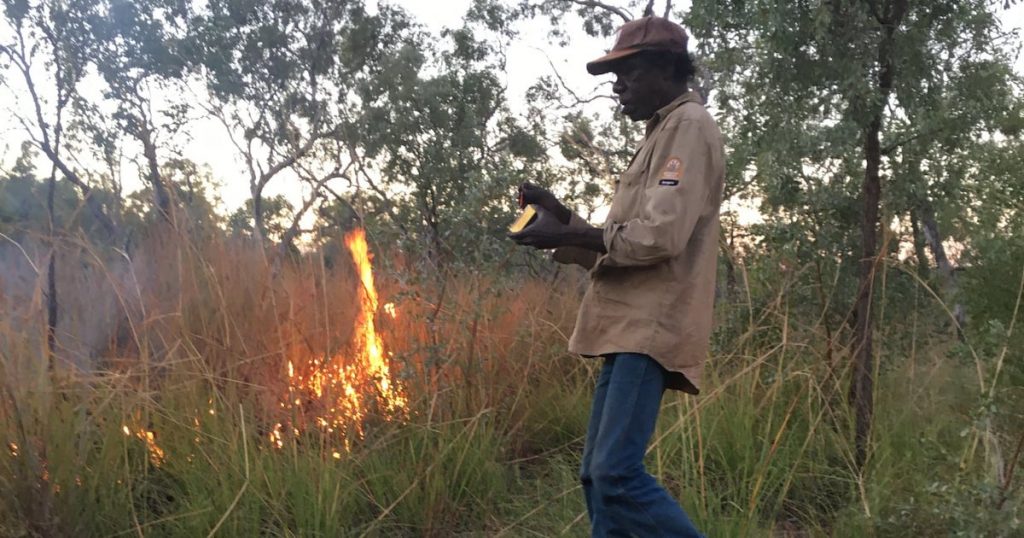Cultural burning to cut emissions
A whopping four per cent of Australia’s annual greenhouse gas is emitted by fires in Northern Australia’s tropical savanna.
Covering a quarter of the Australian mainland, the tropical savanna is where most Australian fires happen. A combination of wet seasons promoting rapid growth, and long dry seasons create an environment prone to ignition.
Lightning strikes to eucalyptus trees and understorey grass create major risk late in the dry season. Destructive fires envelope thriving landscapes.
The Savanna Fire Management (SFM) Program aims to lessen these emissions and prevent damage using traditional Indigenous fire prevention, mitigation, and management.
The method? Cultural burning. Fire management has been a part of the culture and landscape of Australia for over 60,000 years.
Aboriginal ranger groups and Indigenous land managers apply traditional knowledge and land management skills to protect the environment and improve biodiversity outcomes by reducing the intensity and extent of savanna fires.
Cultural burning uses ‘cold fire’ to remove fuel-like ground vegetation at lower temperatures, protecting the valuable canopy and the shade it provides to animal habitats and seedbeds. The practice reduces the severity of the late season fires.
‘Hot fire’, intense and sweeping blazes that eradicate and reduce swathes of land to ash, is avoided.

Delivered by the Indigenous Land and Sea Corporation (ILSC), INPEX-operated Ichthys LNG has funded the SFM with $34 million, which will see the program run for 18 years.
The program provides around $2 million per year to fund coordination, training, start-up, and early operational costs for new projects on Aboriginal land in the Top End.
The Wardaman Fire Management project in the Katherine region is the most recently registered emissions avoidance SFM project with the Clean Energy Regulator, making it the fifth project under the ILSC managed SFM Program since it commenced in 2019.
Around a quarter of Traditional Owner groups across northern Australia participate in the carbon economy.
Learn more about the Indigenous Land and Sea Corporation here.
Read more about cultural burning practices in Australia here.
Explorewith Natural Gas Subscribe


